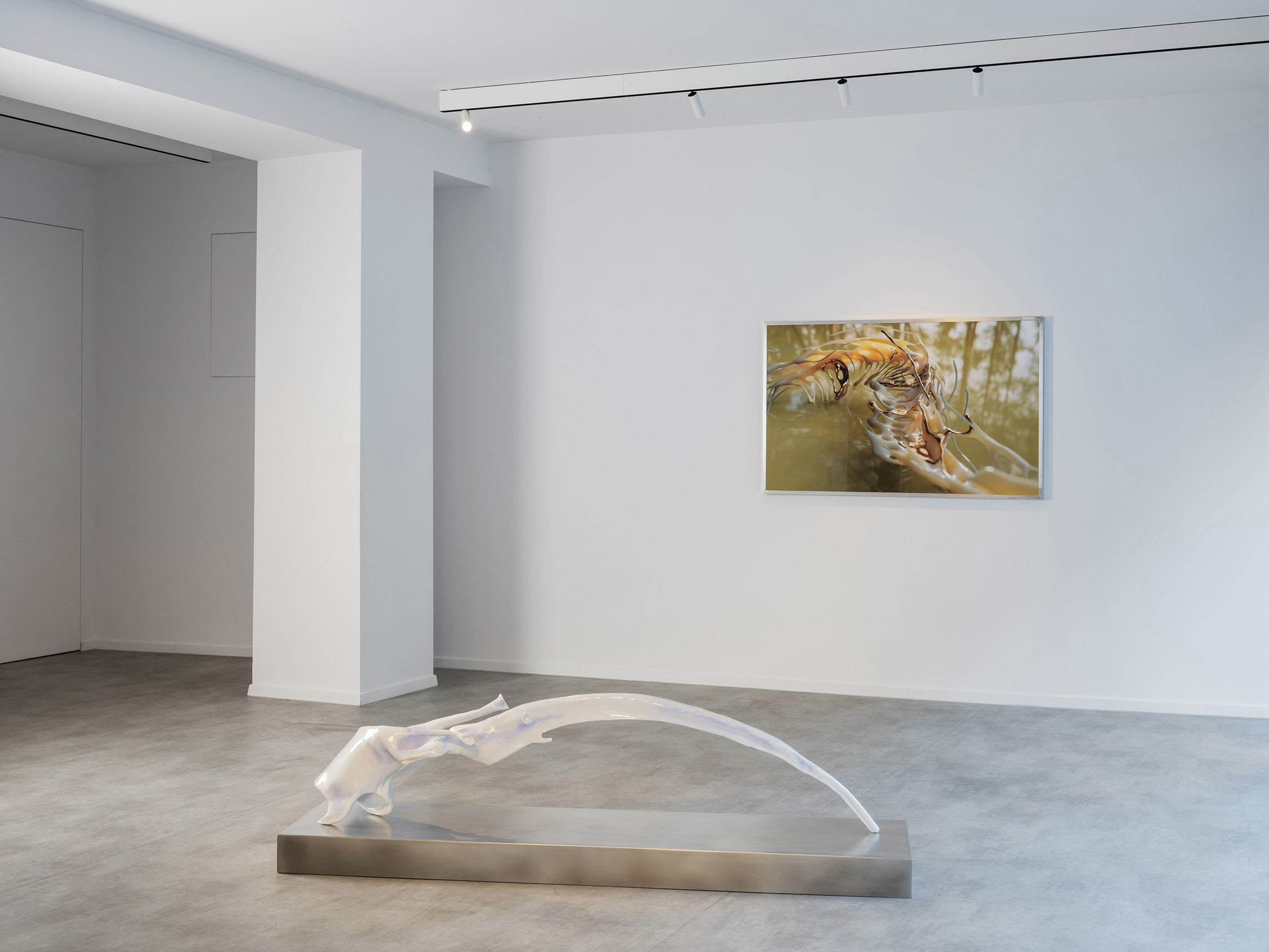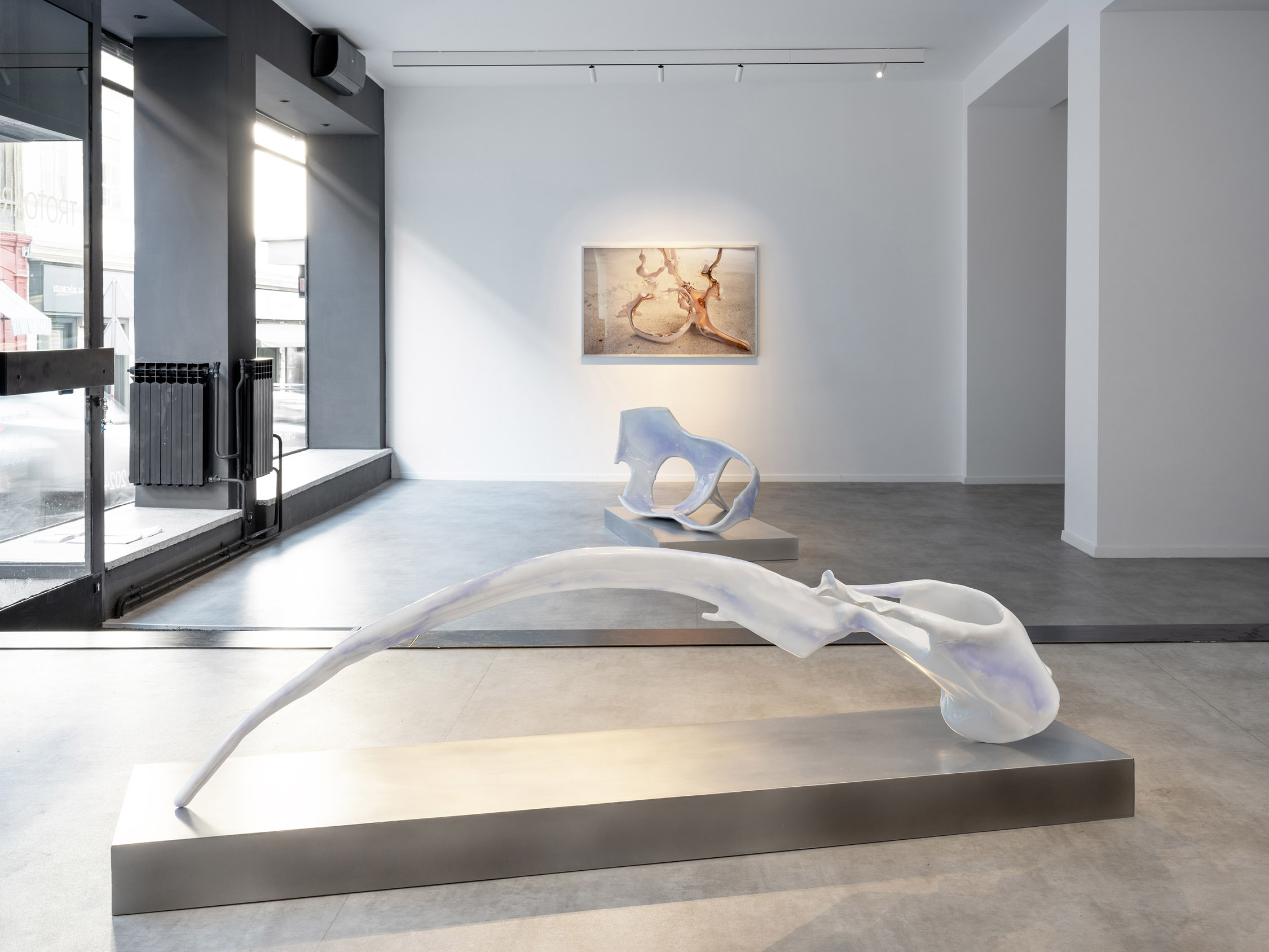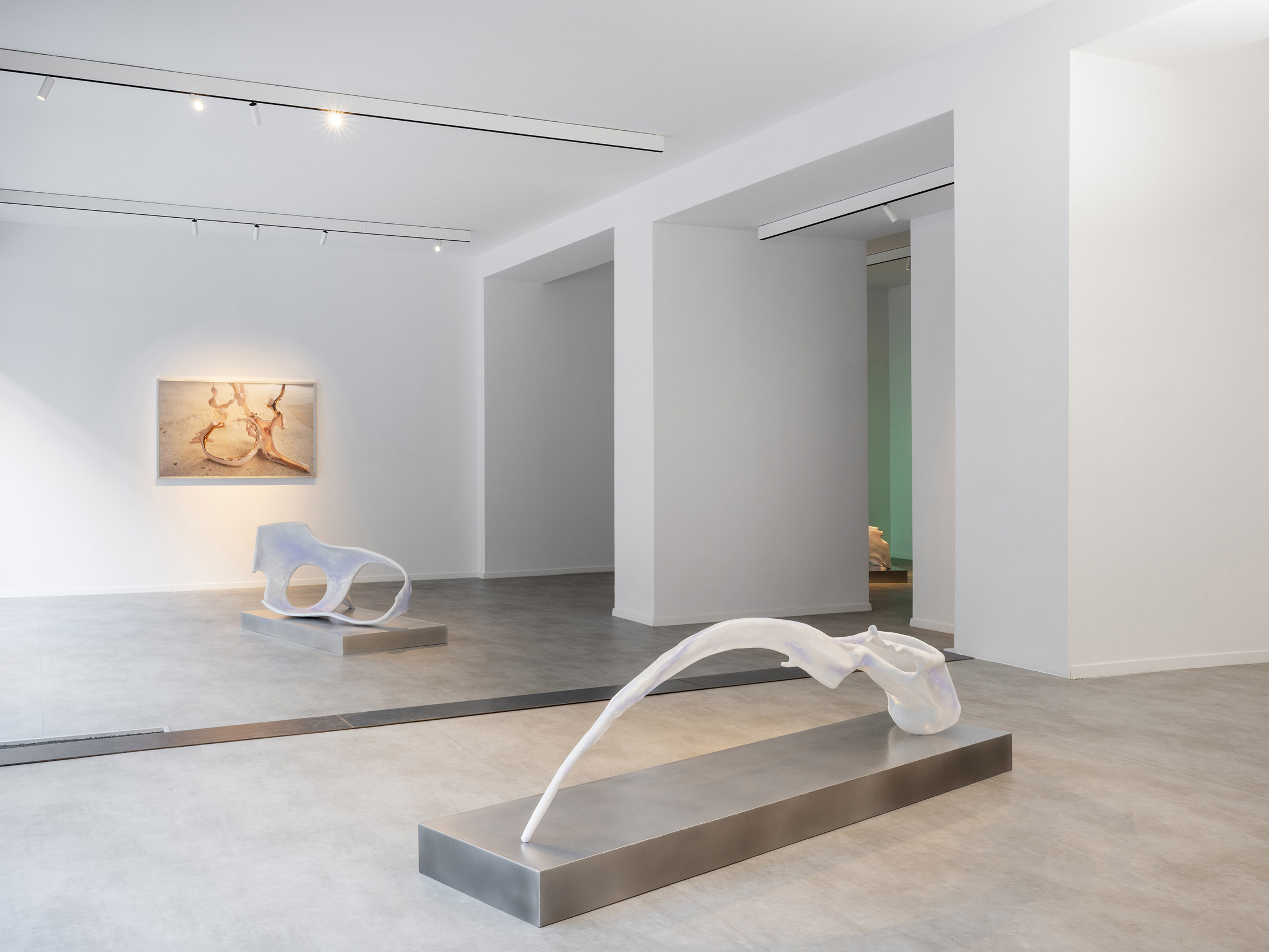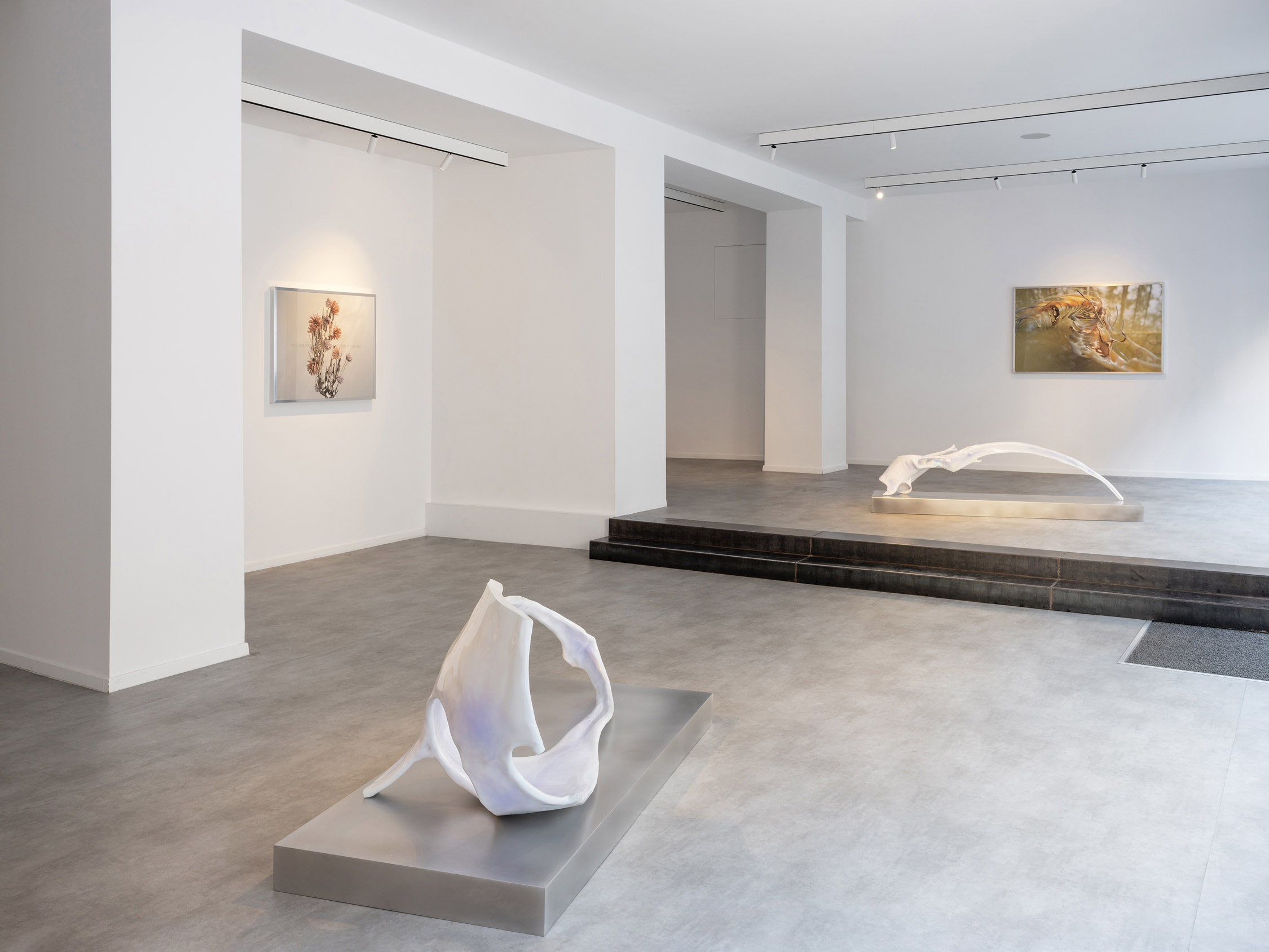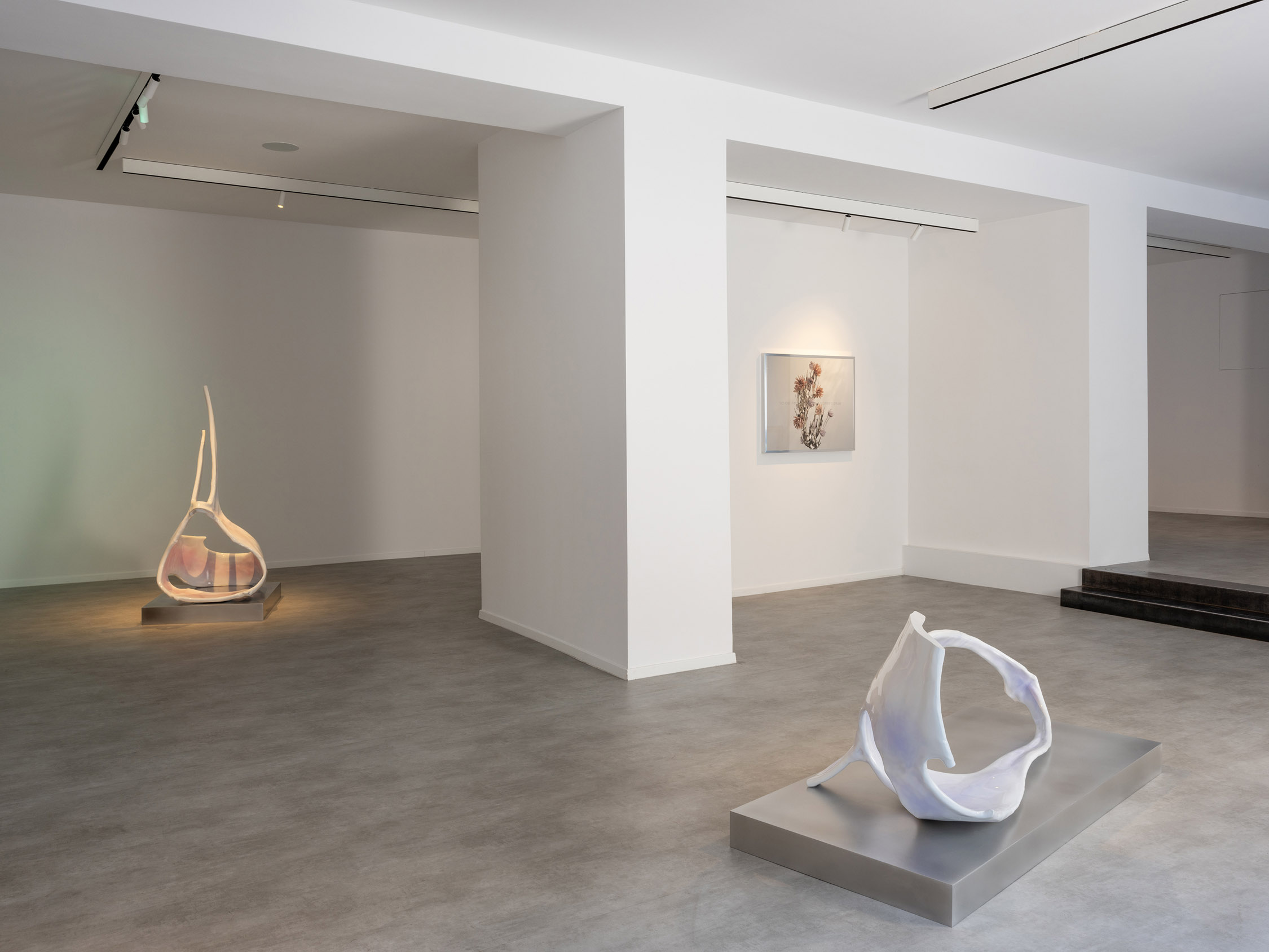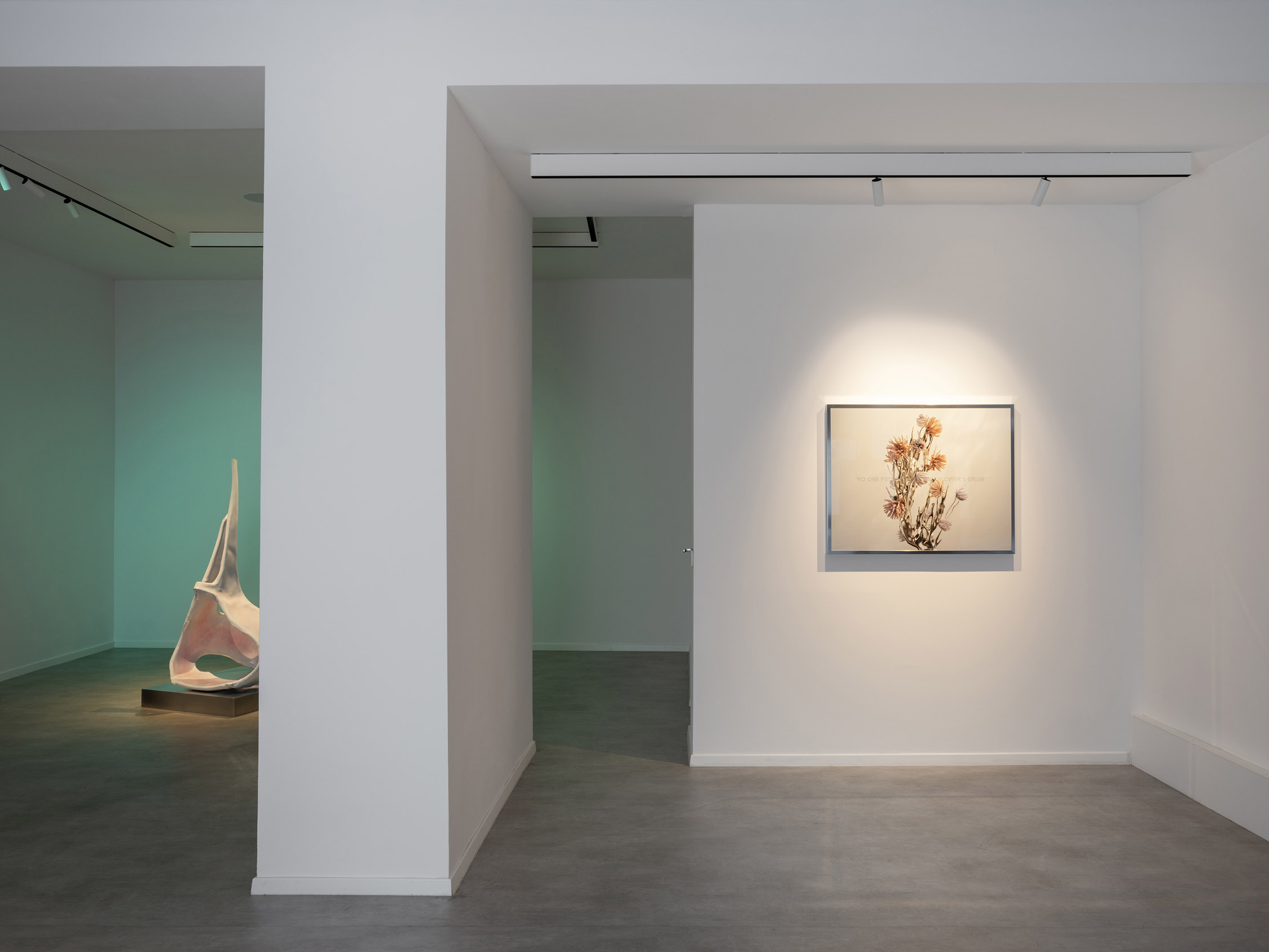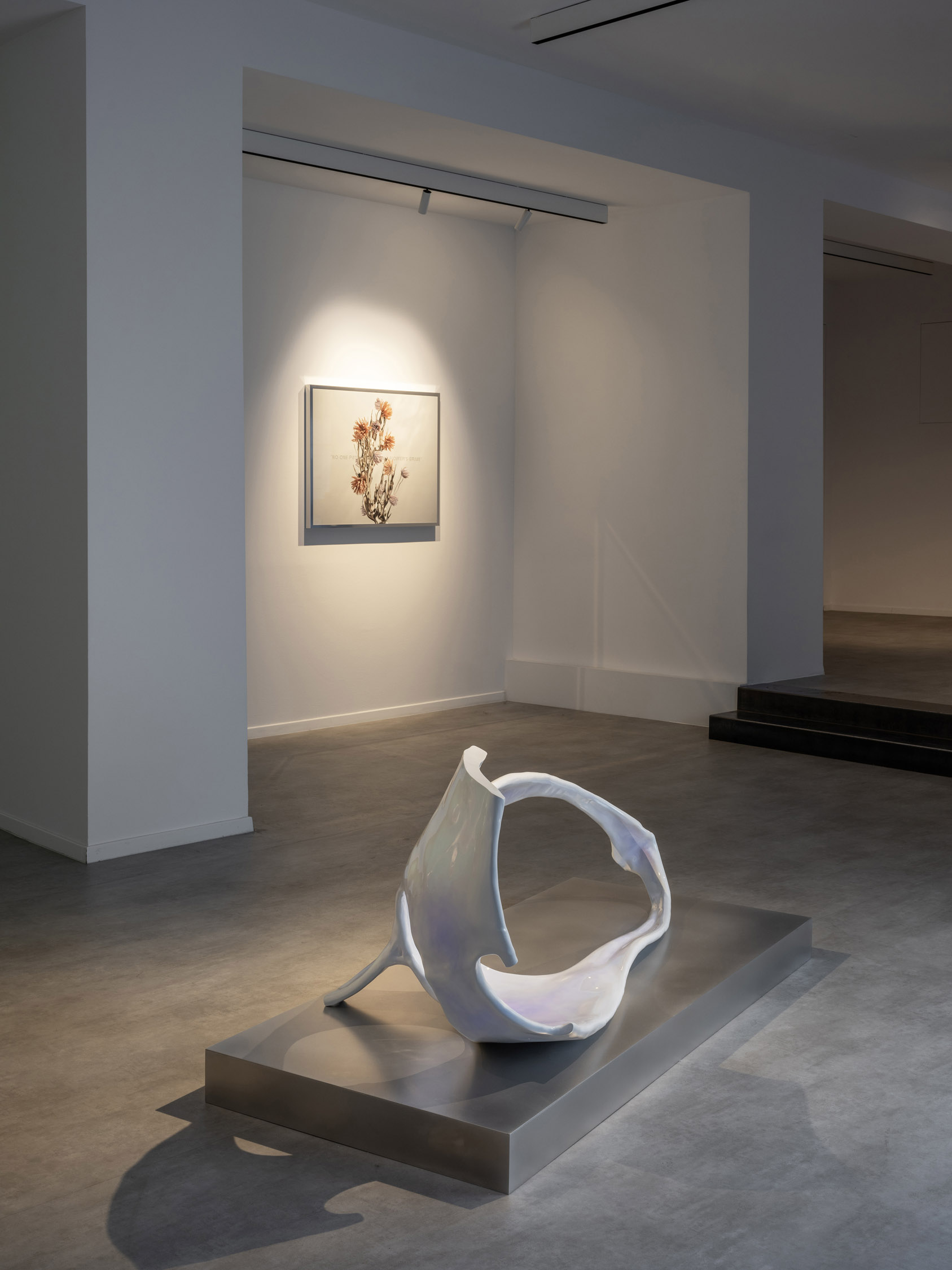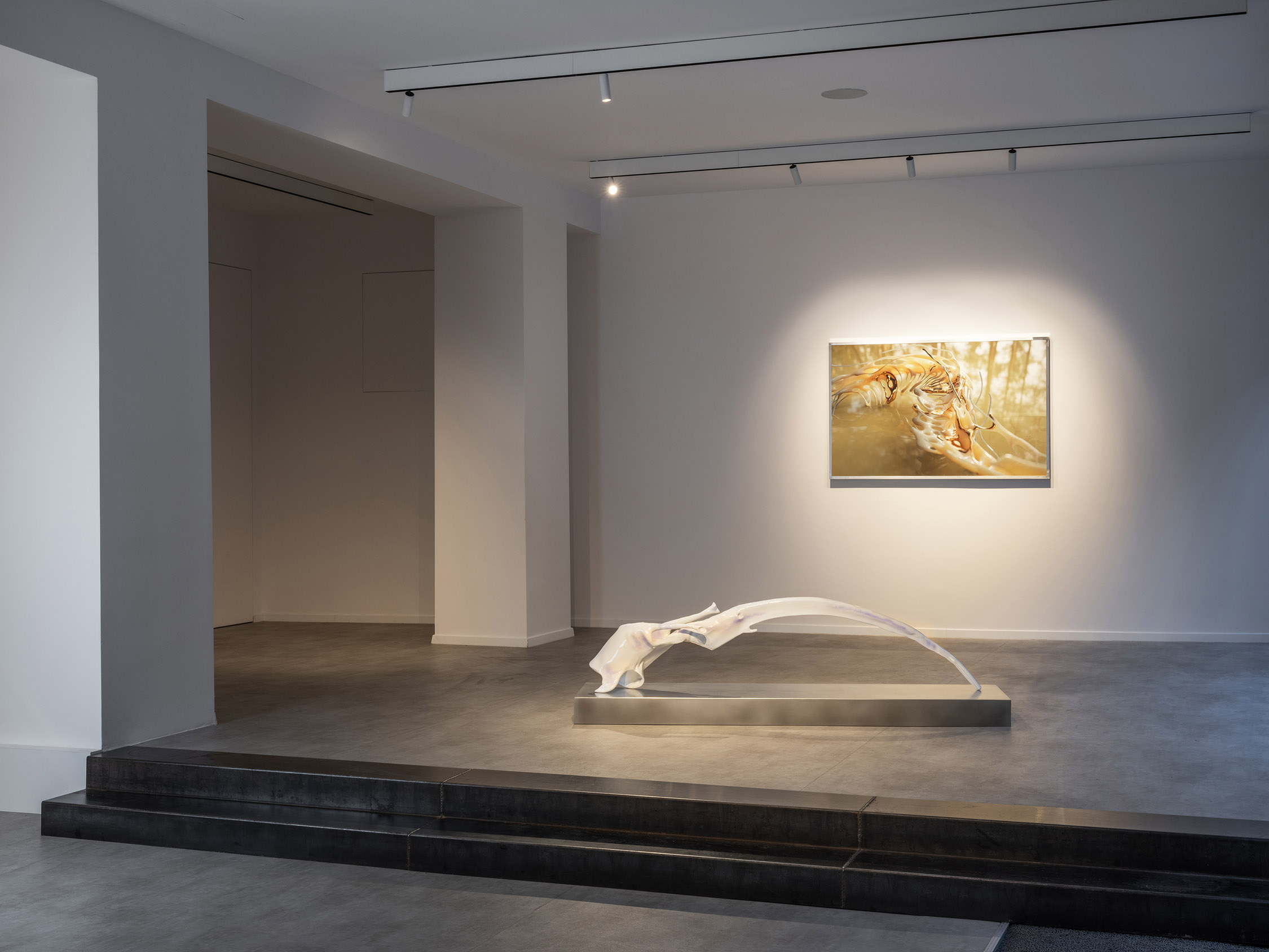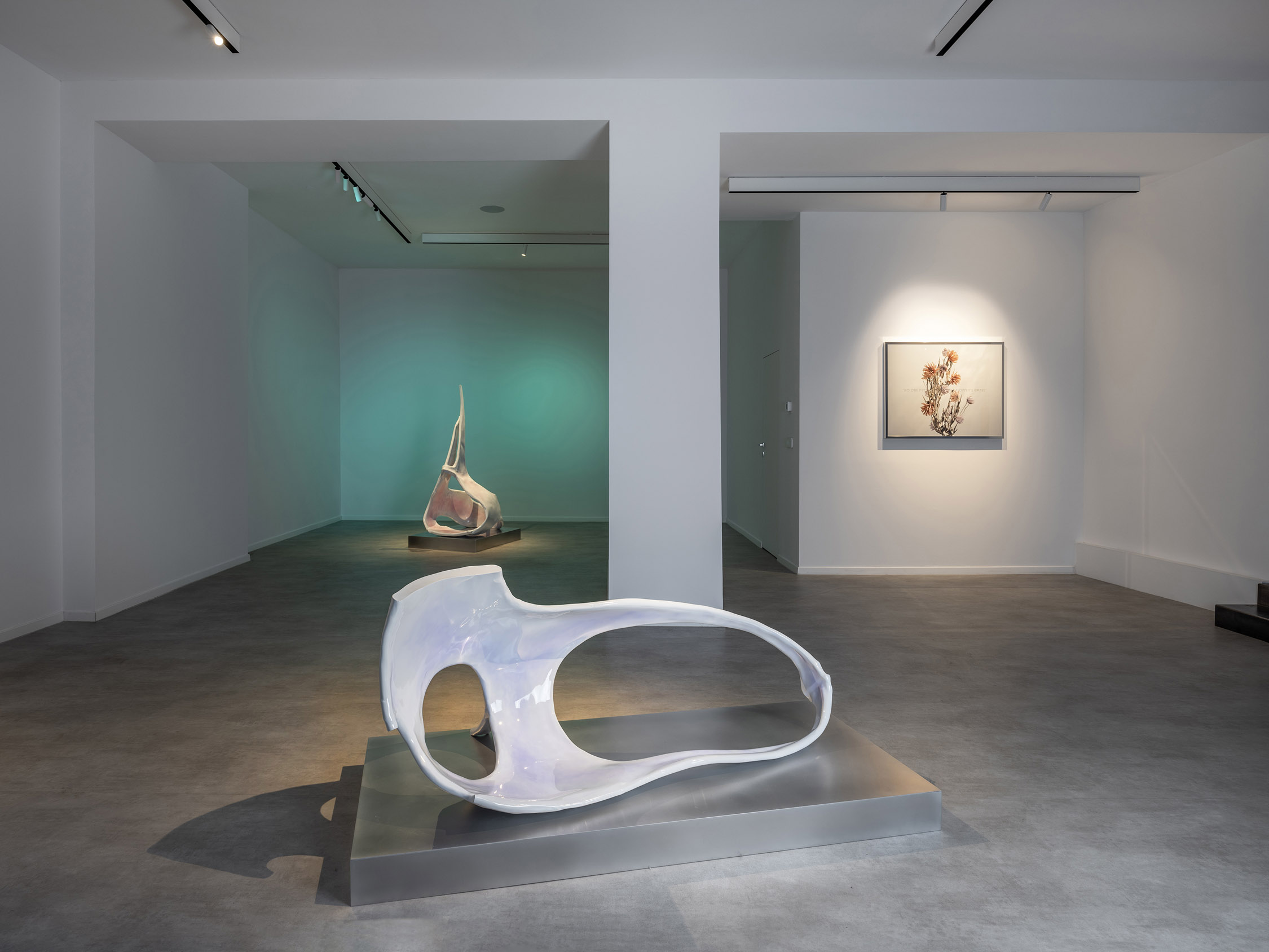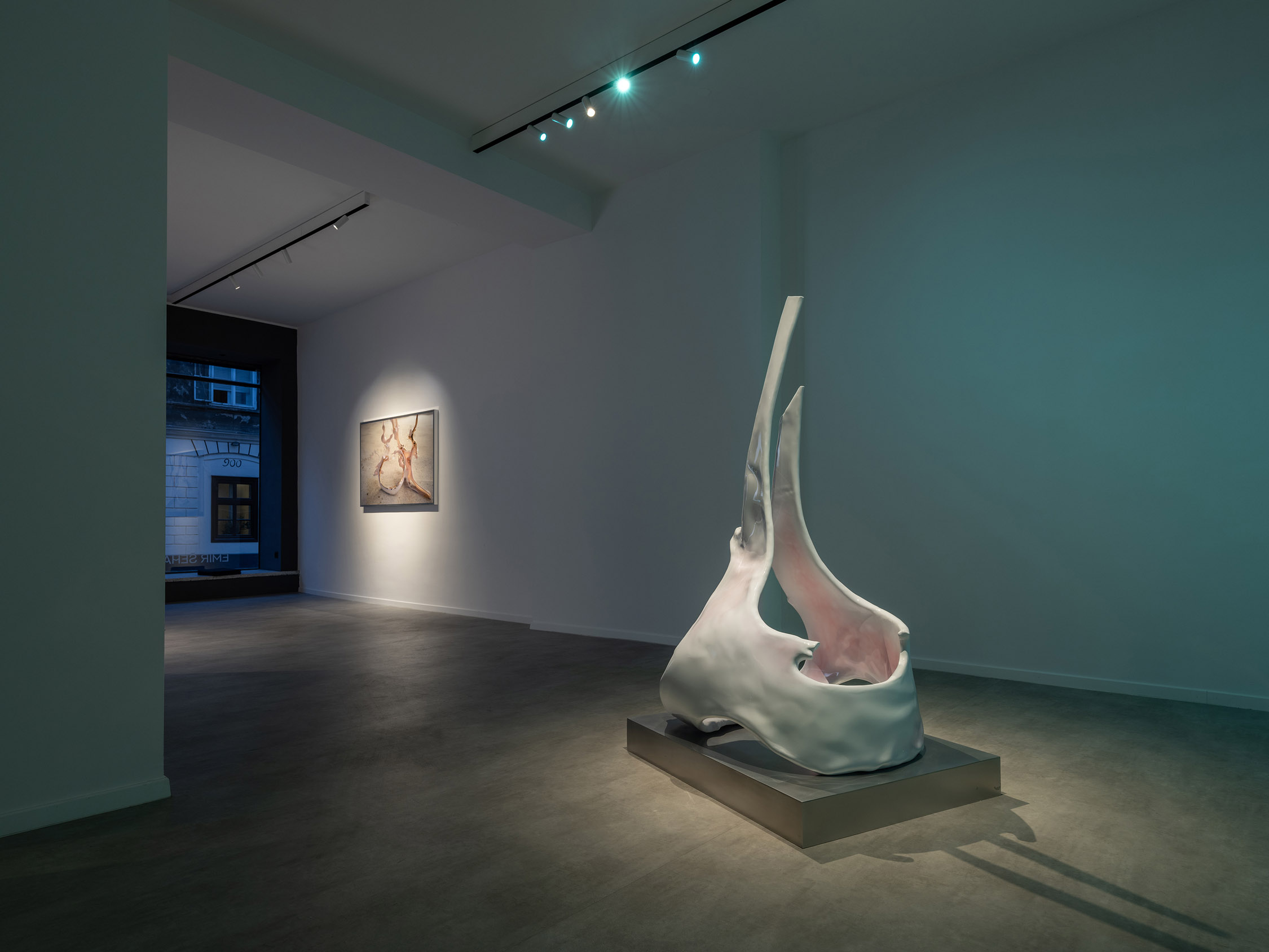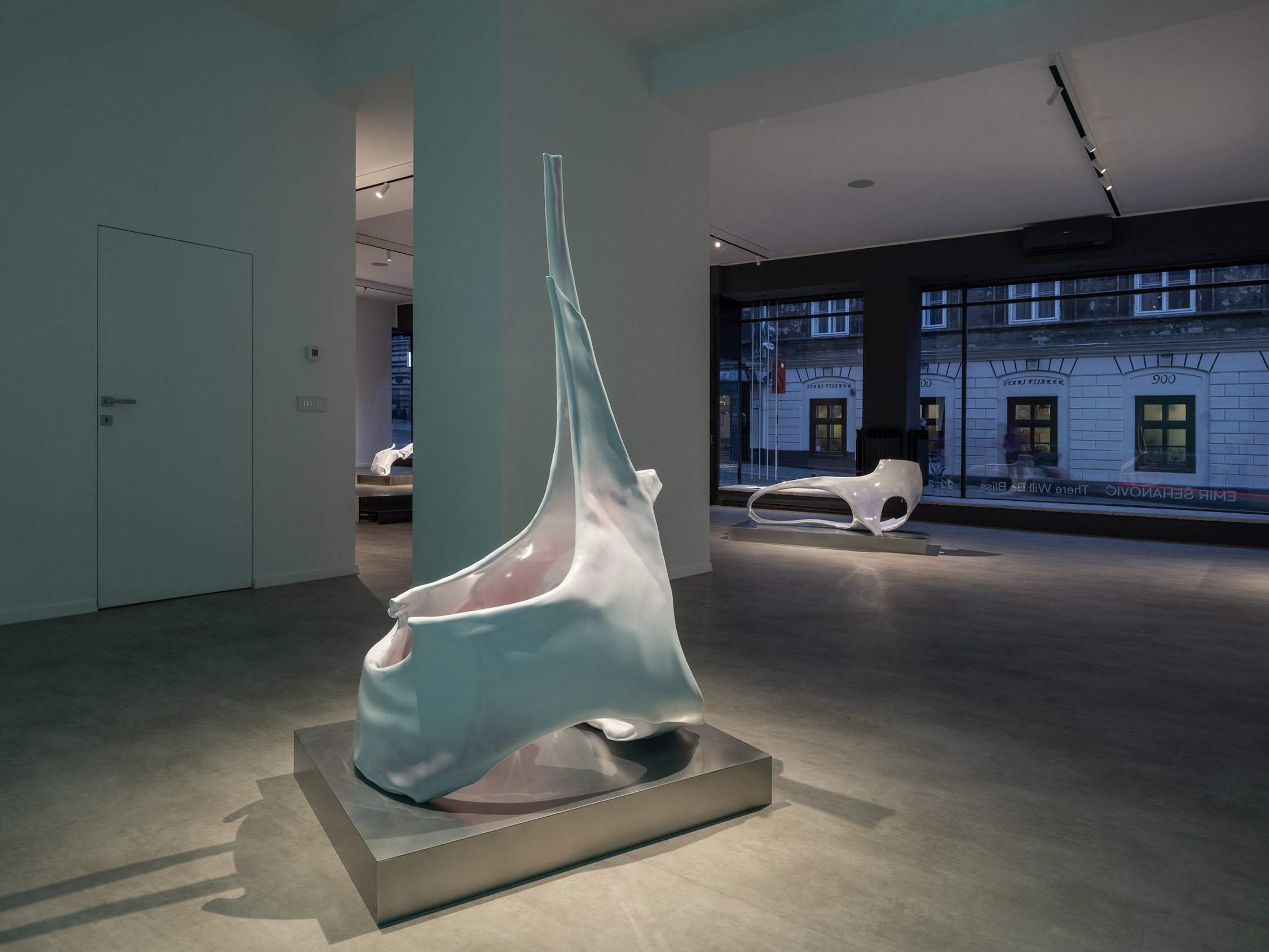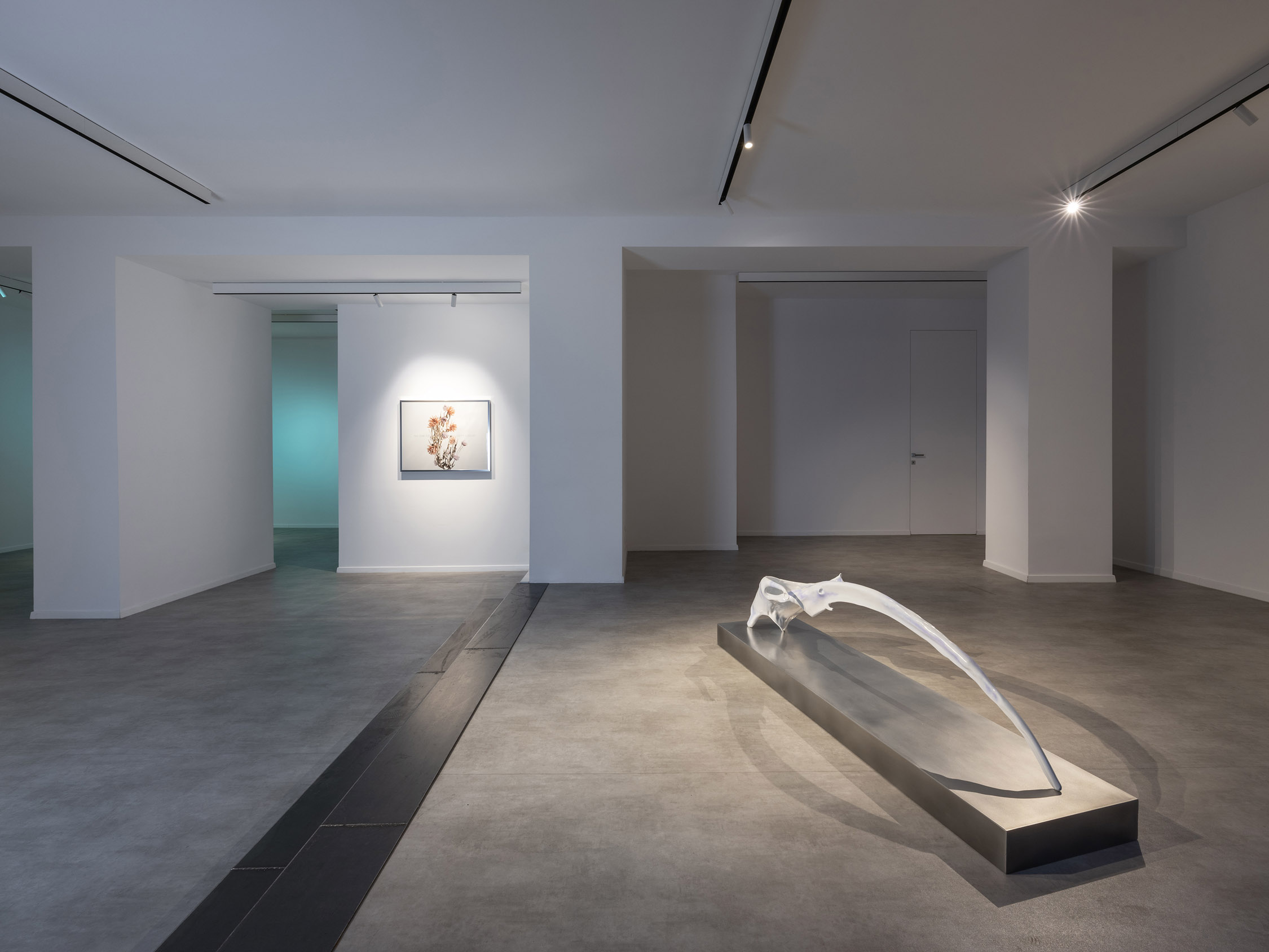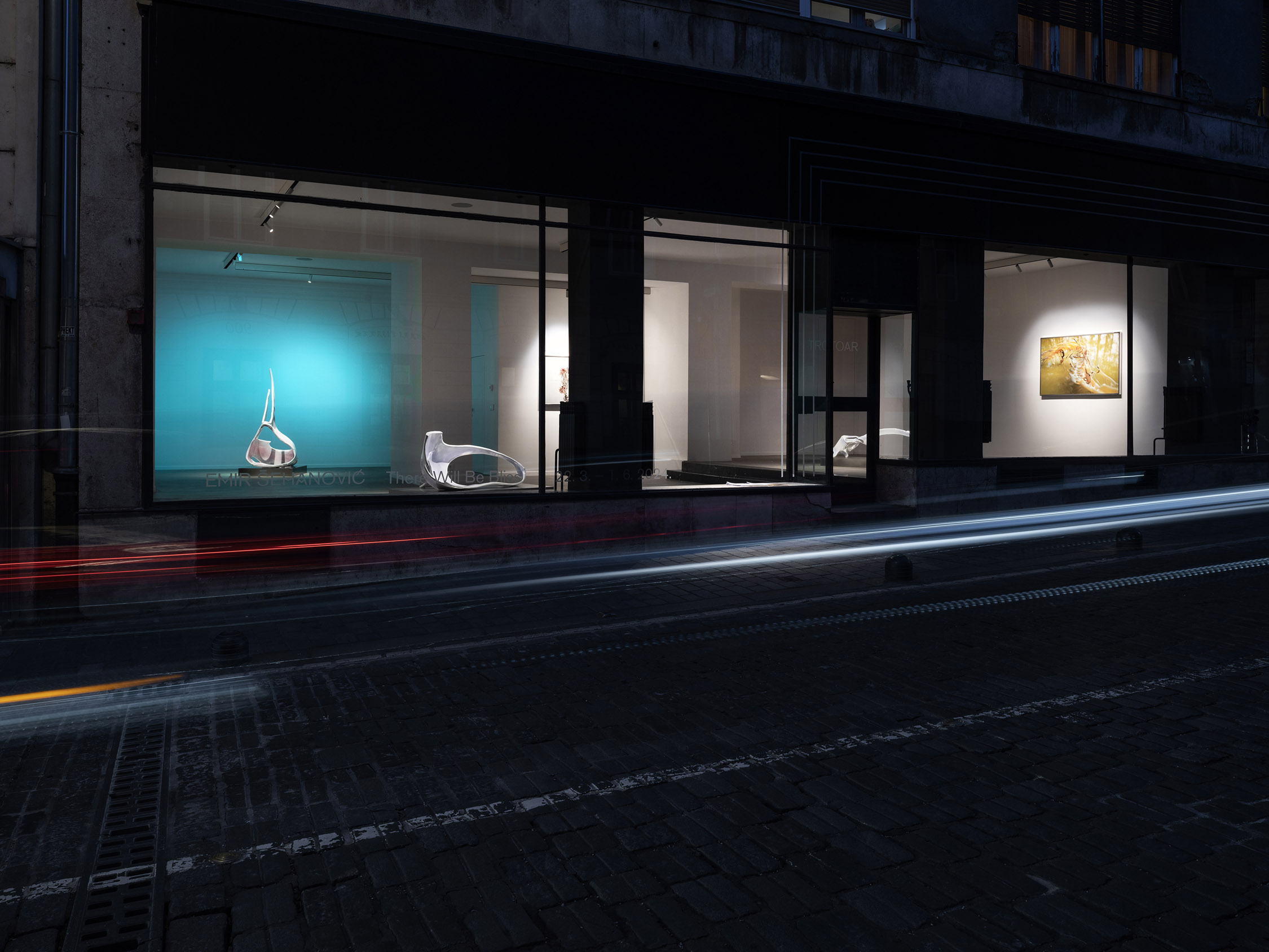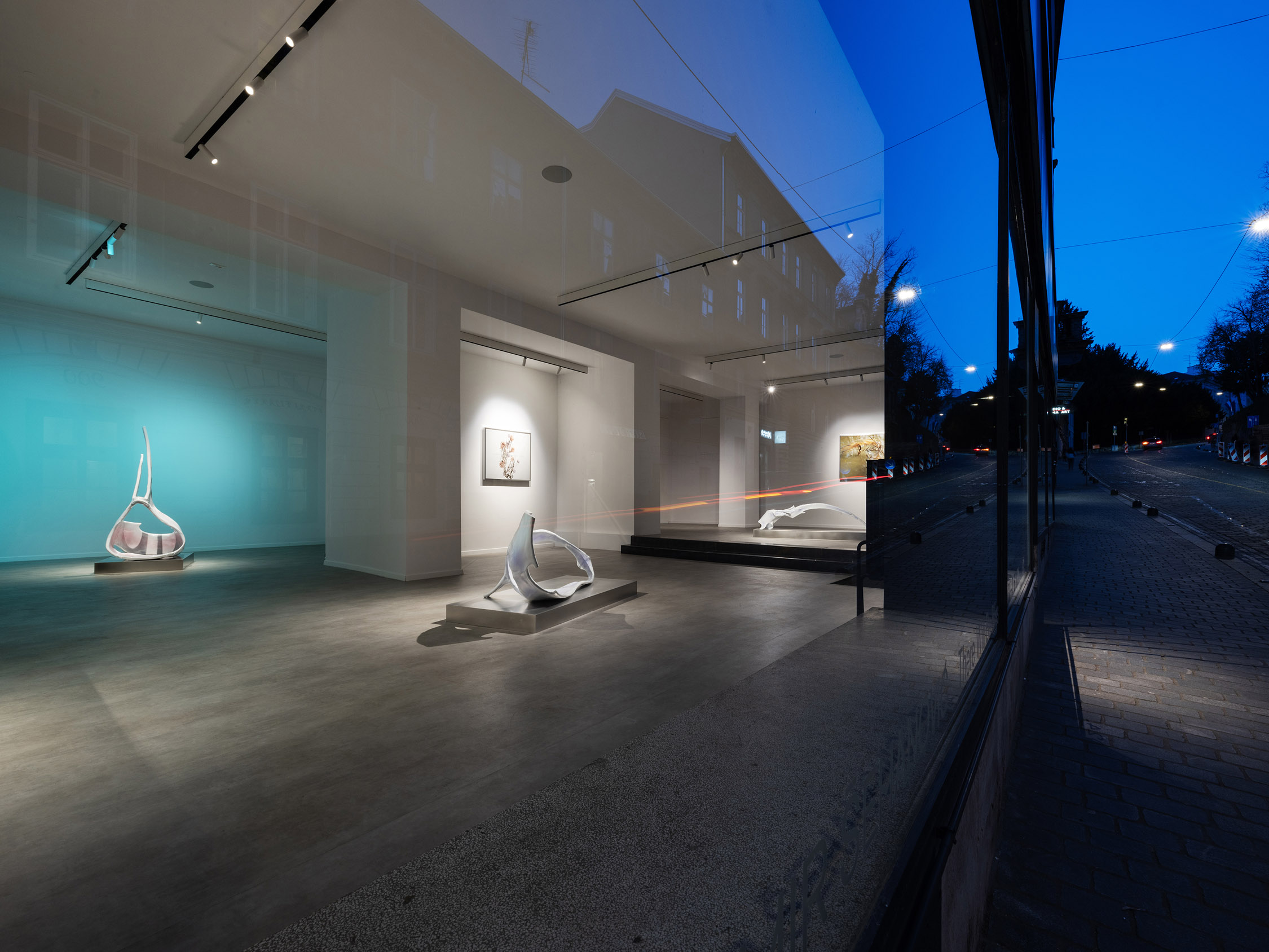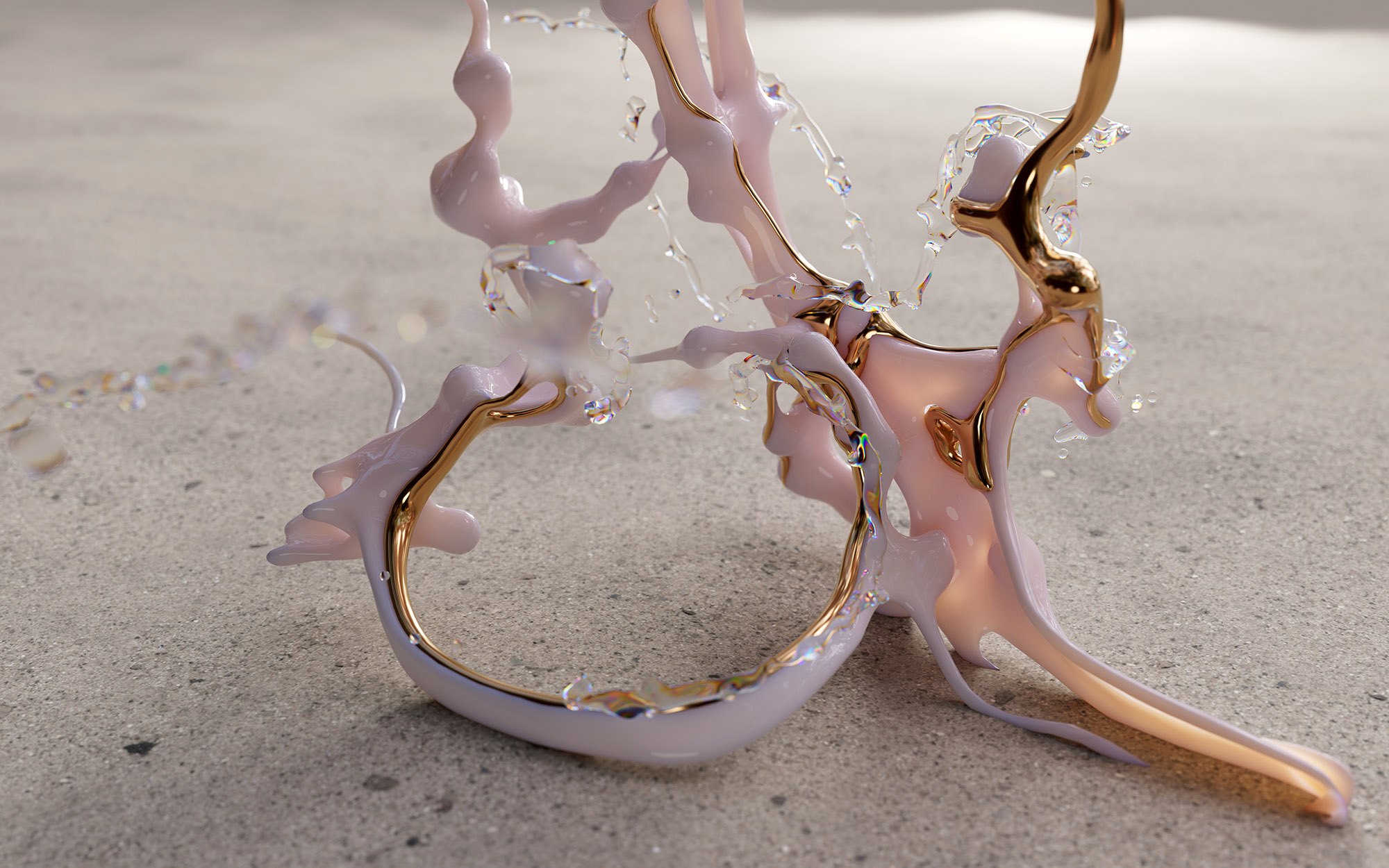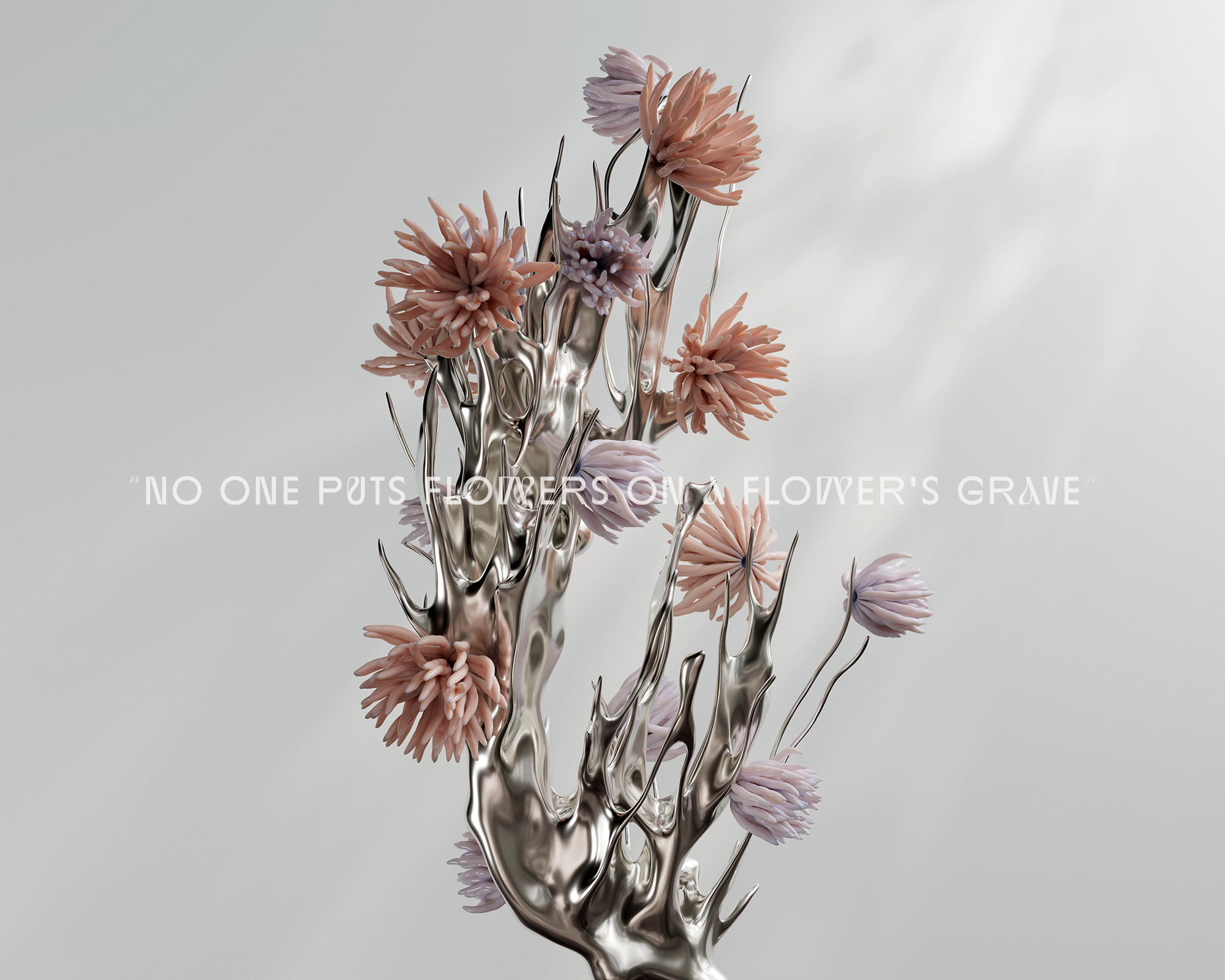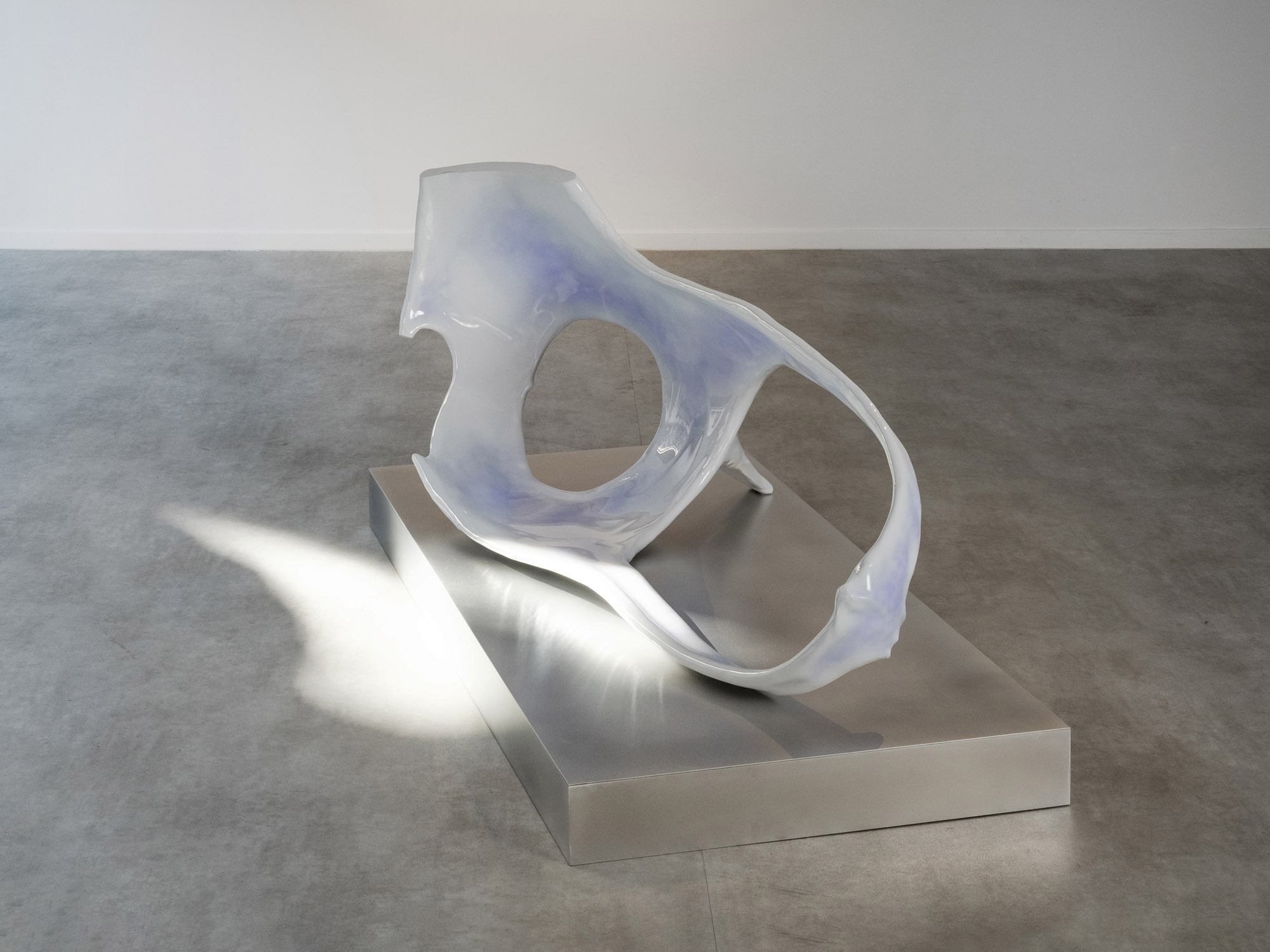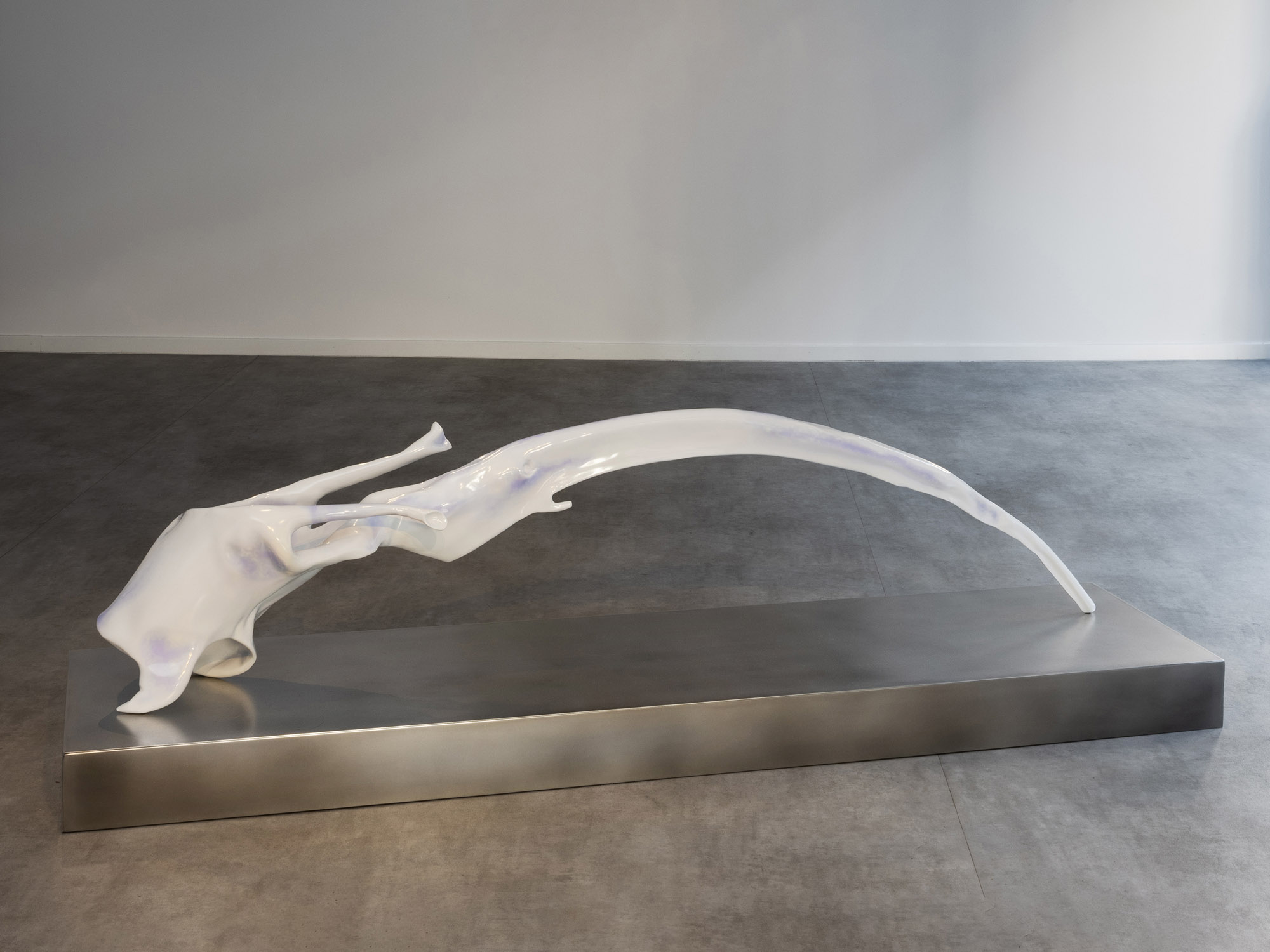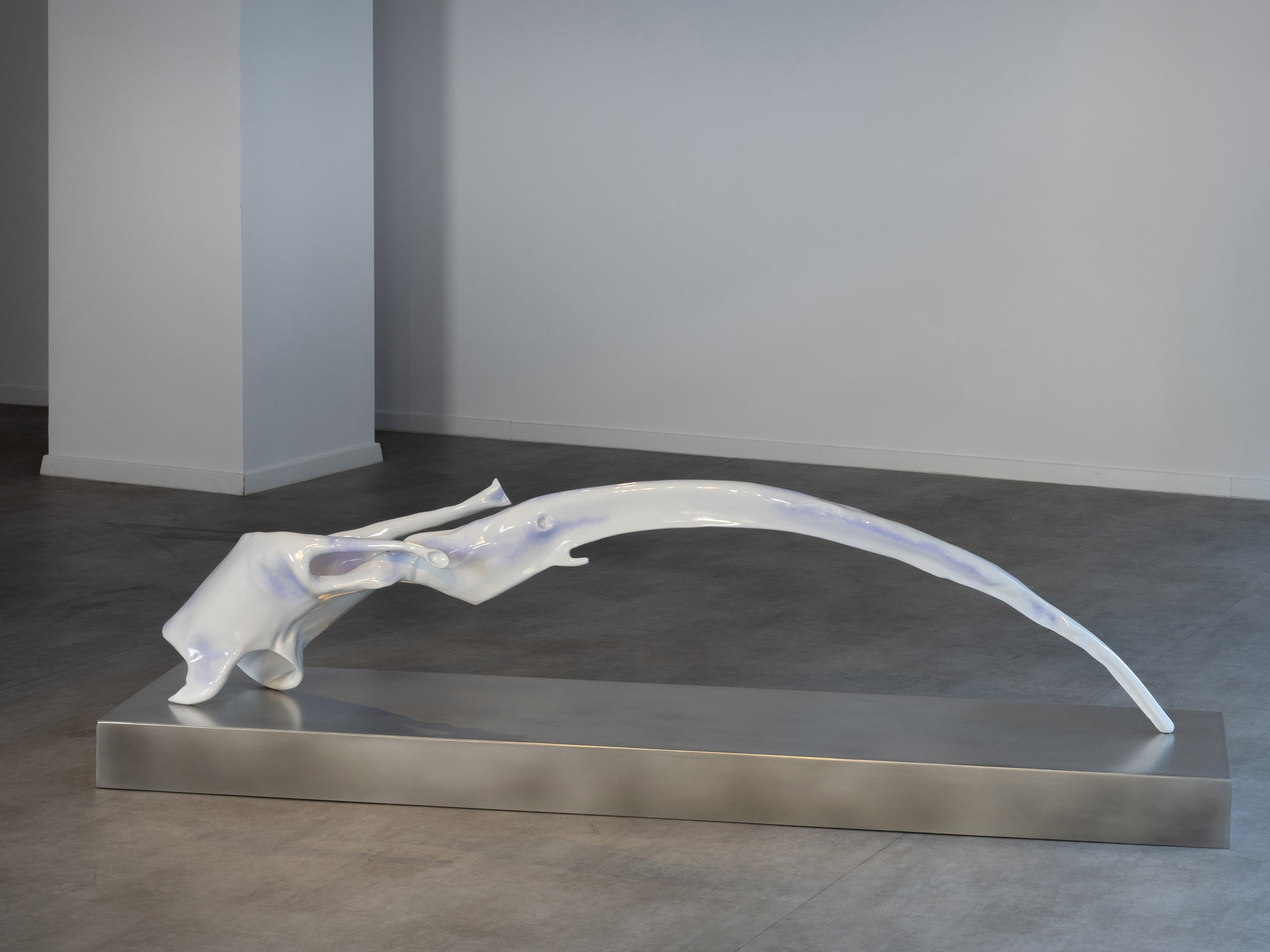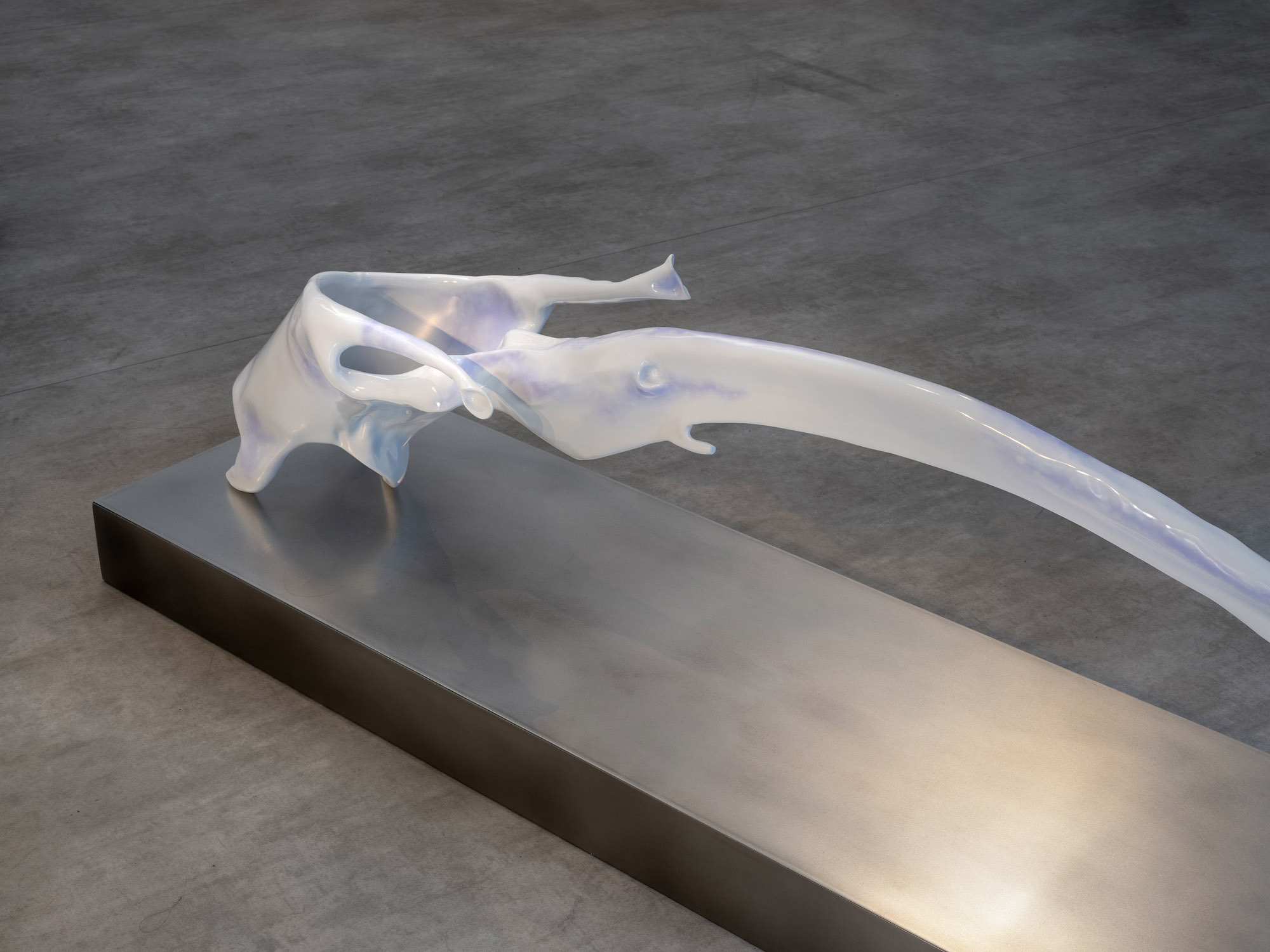Artist: Emir Šehanović
Exhibition title: There Will Be Bliss
Venue: Trotoar Gallery, Zagreb, Croacia
Date: March 22 – June 1, 2024
Photography: images copyright and courtesy of the artist and Trotoar Gallery, Zagreb
On Friday, March 22, 2024, at 7 p.m., Trotoar Gallery in Zagreb will open an exhibition by Emir Šehanović titled “There Will Be Bliss.” At his first solo exhibition in Zagreb, Emir Šehanović presents a new cycle of works exploring complex themes such as human imagination, creativity, and sensitivity, and their impact on the creative process. Through the exhibition “There Will Be Bliss,” he introduces us to a world of wondrous abstract forms – monumental sculptures and digital prints – in which he explores a possible post-human future and the question of how we will perceive the world when nature becomes a minority. Šehanović subtly highlights the consequences of human actions, prompting us to reflect on our role in a world confronted with threats such as environmental destruction and artificial intelligence.
Born in Tuzla, Šehanović currently lives and works in Belgrade and is active on the international exhibition scene. Recently, he was also listed among the top 100 sculptors of tomorrow by the publishing house Thames and Hudson.
The exhibition will be open until June 1, 2024, and the accompanying program will be announced later.
“Why aren’t revolutions started by the most humane people? Because humane people don’t start revolutions, they start libraries… and cemeteries.”
Jean-Luc Godard, Notre Musique
There is a world of tangible objects. But there is also another reality, one that exists within us. It is shaped by our experiences and the lessons we have learned. While we can suppose that imagination and creativity can, at least in part, identify an individual, we should not forget that the creative process is primarily fostered by a state of “receptiveness”.
Let us consider again the case of humans directly intervening in natural organic processes, in which imagination runs wild and creates a particular feeling, the Kantian “state of transcendence”. Transcendence projects the human being outside their limited nature and directs them towards endless possibilities. In the work of Emil
Šehanović, it is precisely through this unrestrained and unlimited gesture that potential and significance are uncovered. It can be said, albeit with a slight undertone of irony, that we are living in an era of “bliss”, which is what the artist himself suggests. The exhibition There Will Be Bliss issues an ironic warning, whilst simultaneously introducing us to a range of monumental sculptural forms, which oscillate between excitement and wonder. These exquisitely produced works bear some resemblance to the echoes of some kind of prehistoric experience where we observe an image, but not reality. It might be said that, for a moment, we are witnessing the ruins of the future, of that history of the world that indisputably encourages inertia and the sense of fear that we bear witness to.
Far from offering an illustration of “the remains of life”, from the imitation of the shape of a fossil, the artist shows us that which is unforeseeable in the act of creation. He reminds us that the artistic process requires us to leave behind the “order”, that this act requires a fundamental deviation towards that which has neither measure nor rules. Emir’s sculptures, rather like some kinds of portraits, warn us of a possible posthuman future in which we, the Earth’s dominant species, have died out, and the ruins of our hyperurban civilisation are covered up by the spread of wild plants. This exhibition sees the artist combining sculpture with prints created using the montage technique. In these works, we can recognise the artist’s authentic, anthropocentric approach, which is accompanied by clear meanings and unpredictable details. The potential of these pseudo-natural motifs is one that resists definition. The motifs make visible that which is invisible to many, and which becomes comprehensible in the era of virtual reality. These images are particularly valuable because, in a digital era, they hint at a turn towards hyperreal images, introducing us to the new and unfamiliar environment of the imaginary nature of the future. An understanding of these images fits into a vision of a world that we are helpless to change, without forcing us to pose the question: are we right, or have we made a terrible mistake?
We are witnesses to the most uncertain period in human history. Our planet is dying, and we are faced with impending dangers such as the destruction of the environment, mass extinctions, artificial intelligence, and biogenetics. Šehanović discreetly draws attention to the consequences of our actions, confronting us with a disturbing question – how will we see the world once nature becomes a minority in it?
Humans are nostalgic creatures, and for this reason they might yearn for the world as it once was, established in a particular space. If we consider the artist’s visions of space from this perspective, we are faced with some kind of new natural process of evolution, an experience that encourages us to search for comparative values, to expect and (dis)agree with existing ones.
Considering the status and function of art, its approaches and its future, brings up questions that are not always directly related to the artistic process, but which communicate with it in powerful ways. It would appear that Emir Šehanović’s work is slowly preparing us to consider harsh collective and individual routines, with the
space in which it is to be presented slowly becoming infused with numerous mechanisms – becoming blocked, systematically adapted, or marked.
-Ivan Šuković
Emir Šehanović is interested in today’s world that has gone to pieces as the literal sediment of human activity. He brings objects to an (after)life, or to the point at which they start to resemble life. Much of his work brings together parts of different bodies, different types of hybrids of us and our image. Maintaining that the body is fundamentally plastic and that corporeal identity is constituted by a conspiracy of sensations, he pursues the question of how the body fits, or fails to fit, into its aesthetic environments.
Emir Šehanović (*1981, Tuzla) lives and works in Belgrade, Serbia. Outside of the region, he has exhibited his work at solo and group shows at eastcontemporary, Milan (2023), Space O+A, Tokyo (2023), viennacontemporary (2023), Liste Art Fair Basel (2021), Kunstraum Riehen (2021), Jeune Création, Les Beaux-Arts de Paris (2018), AQB Project Space Budapest (2018), Ultrastudio Los Angeles (2018), Gallery Weekend Berlin (2015), and Athens Video Art Festival (2013), among others. He also took part in Liste Art Fair (2015, 2020, 2021), Vienna Contemporary (2019), Parallel Vienna (2018), and ArtGeneve (2018, 2019). Šehanović has recently been selected as one of the 100 Sculptors of Tomorrow, in a publication by Thames and Hudson.

